In a recent missive, it was noted that momentum meltdowns don't necessarily lead to serious declines in the blue-chip indices. The missive took a look back at history and found that there have been times (five to be exact) where the Dow and S&P weren't dragged down when the music stopped in the mo-mo names.
In fact, there have even been times where the S&P moved higher while the momentum meltdown was occurring. However, the key takeaway from the look at past mo-mo meltdowns was that the damage in the high fliers often leads to a deterioration in investor sentiment, which, historically, has led to longer periods of "sloppy" or corrective action.
Therefore, the primary question of the day is whether or not the S&P 500 and the DJIA will be able to ignore the severe corrective action that has taken place in the biotech, internet and social media names. Will the broad market just ignore the carnage in the micro caps and march merrily higher? Or will the sloppy action cause investors to lose confidence and eventually head for the exits en masse?
So Far So Good, Right?
The S&P 500 closed Thursday about 5 points (or 0.26 percent) from the recent all-time high set on May 13th. As such, the bulls argue that the meaningful correction that almost everyone on the planet has been looking for, doesn't appear to be happening. And if the market hasn't tanked during the much ballyhooed "Sell in May" period this year, well, the thinking is that maybe there won't be a correction after all in the near-term.
However, the key to the bull case would seem to be the momentum names. IF the worst of the selloff is behind the market and IF the mo-mo and microcap names can stabilize, THEN maybe, just maybe, stocks can head higher from here.
But... if the corrective phase in the areas that have been hit hard continues and/or intensifies, then history shows that stocks may stay sloppy for a while longer and that investors may need to think about taking defensive action.
Here is a look at some charts to see if there are any signs of stabilization happening.
S&P 500 Daily
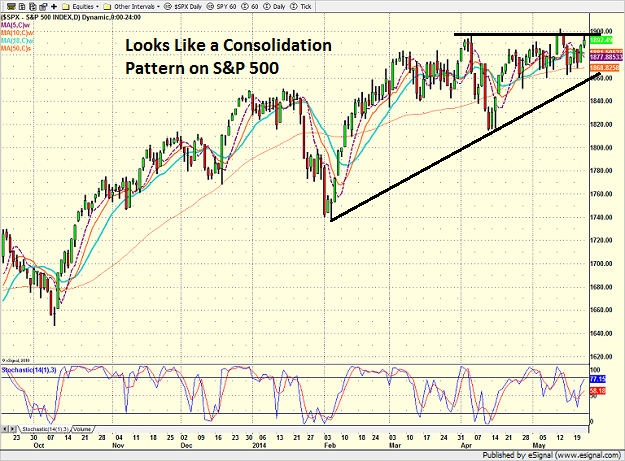
While 2014 has been no picnic for traders, anyone employing a buy and hold approach may be wondering what all the fuss is about. The bottom line on the S&P is simple: It looks like a traditional consolidation pattern.
However, if one takes a look at the S&P on a longer-term basis, the story is even better.
S&P 500 Weekly
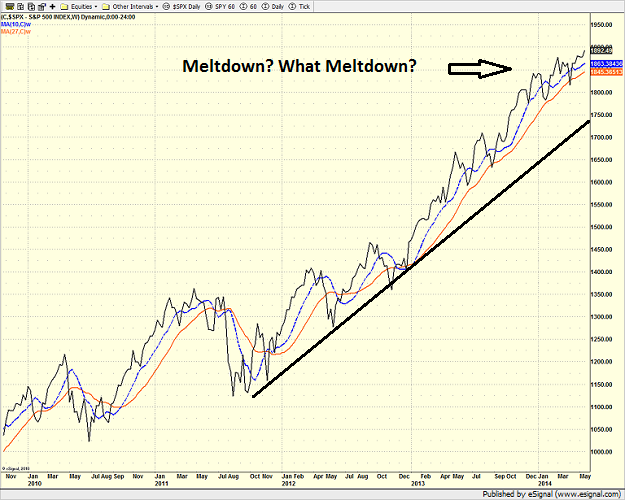
In short, investors looking at the S&P 500 on a weekly basis probably didn't even know there was any sort of "meltdown" happening.
But anyone invested in small-cap and micro-cap stocks knows better.
iShares Micro-Cap ETF (IWC)
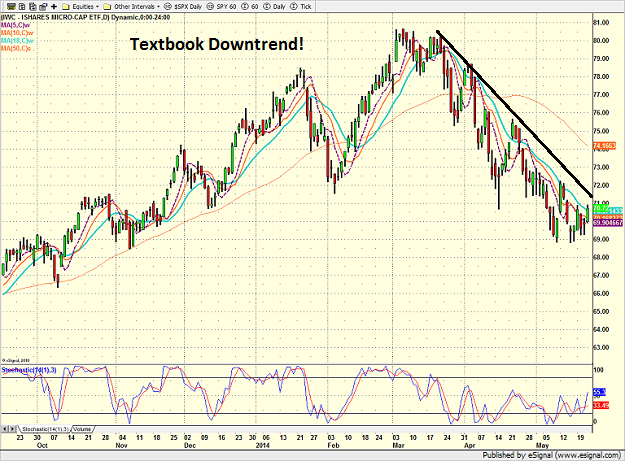
Although the Dow and S&P are within a whisker of all-time highs, the charts of these small companies are clearly hurting. And the iShares Micro-Cap ETF remains in a textbook downtrend.
The good news is that other areas of the mo-mo universe are starting to show some signs of improvement - such as social media.
Global X Social Media ETF (SOCL)
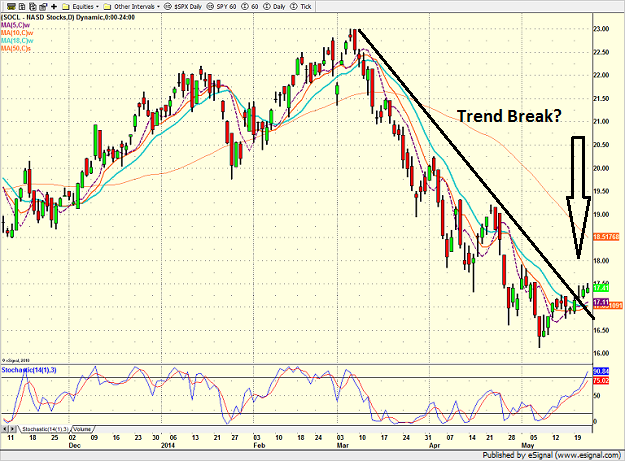
The SOCL ETF appears to have broken the downtrend line that has been intact since the beginning of March. The question of course, is if this area can avoid a relapse.
A similar picture can be seen in the First Trust Internet ETF FDN. The bulls will argue that the downtrend has been broken and that a new uptrend could be forming now. Thus, this is a critical juncture on the FDN chart.
First Trust Internet ETF (FDN)
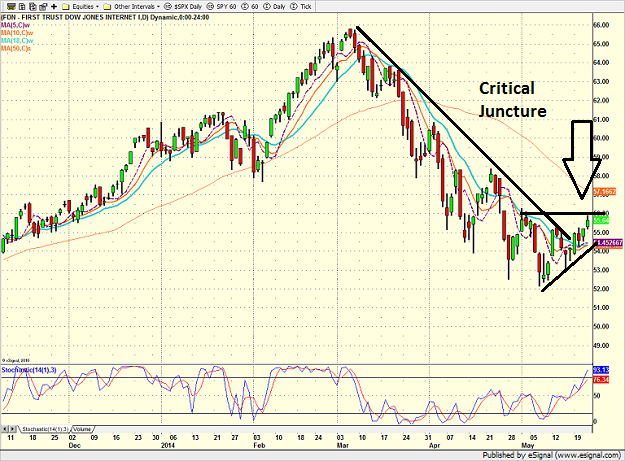
However, there is more good news in the next couple charts. First, is the XBI - the SPDR Biotech ETF. Although the biotechs are not trending higher at this time, they are also NOT trending lower.
SPDR Biotech ETF (XBI)
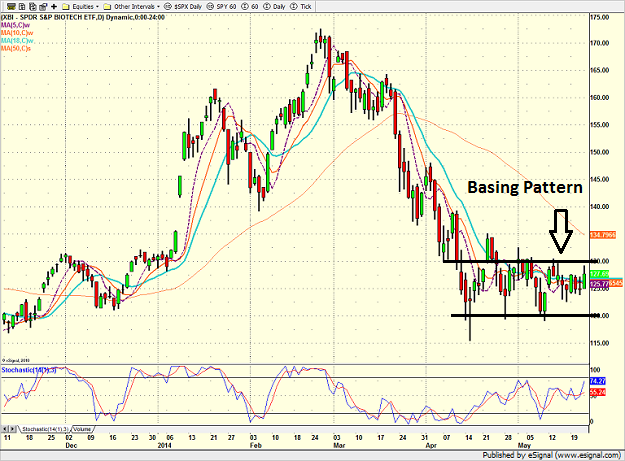
The bottom line is the biotechs, which have been a critical sector in the mo-mo meltdown, appear to be basing at the present time.
Let's look at one more chart to see if there are any signs of life - the NASDAQ.
NASDAQ Composite Daily
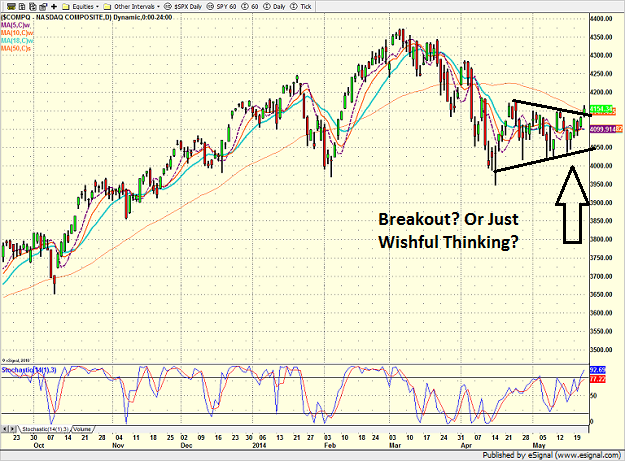
The bulls were pretty excited about Thursday's action on the NASDAQ as they argued that the Composite was possibly breaking out to the upside. However, the bears could be heard giggling in the background, so the jury appears to still be out on this score. Investors should continue to watch the action of the NASDAQ and the IWC very closely.
The key here is that these beaten down areas don't need to rebound for the broad market to survive. No, these sectors need to simply stabilize. Remember, the blue chip indices CAN ignore a mo-mo meltdown for a while. So, if the decline ends quickly and these areas stop going down, one could argue that the market has seen the worst of this corrective phase.
Positions in stocks mentioned: SPY,
Click Here to Receive the full "Daily State of the Markets" report each morning before the opening bell. Dave's full report includes a list of the current market drivers, trend analysis, key technical levels, six momentum indicators, two early warning indicators, the weekly State of the Market Model, pre-open analysis, and a thought for the day.
Edge Rankings
Price Trend
© 2025 Benzinga.com. Benzinga does not provide investment advice. All rights reserved.
Trade confidently with insights and alerts from analyst ratings, free reports and breaking news that affects the stocks you care about.